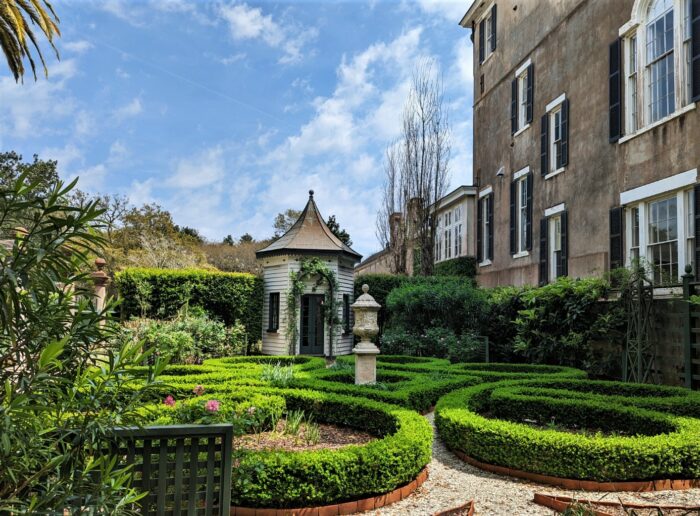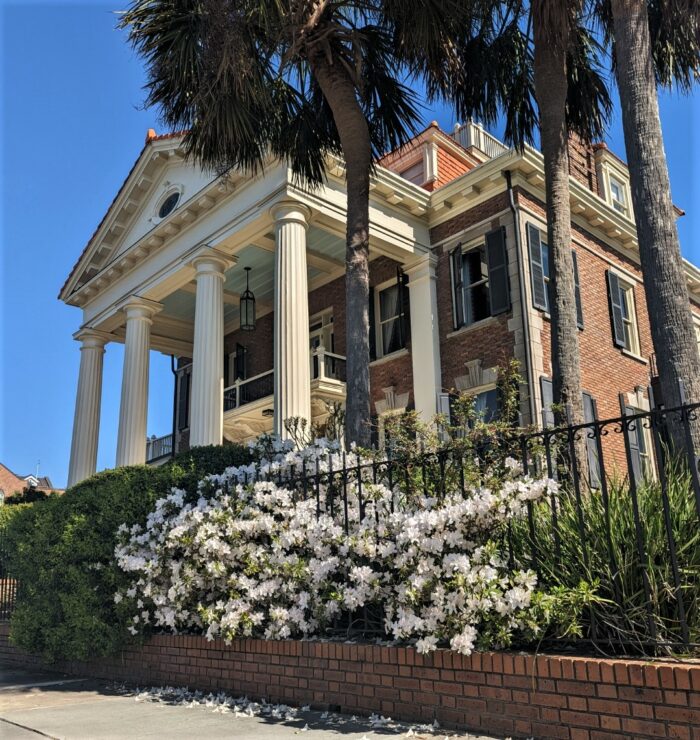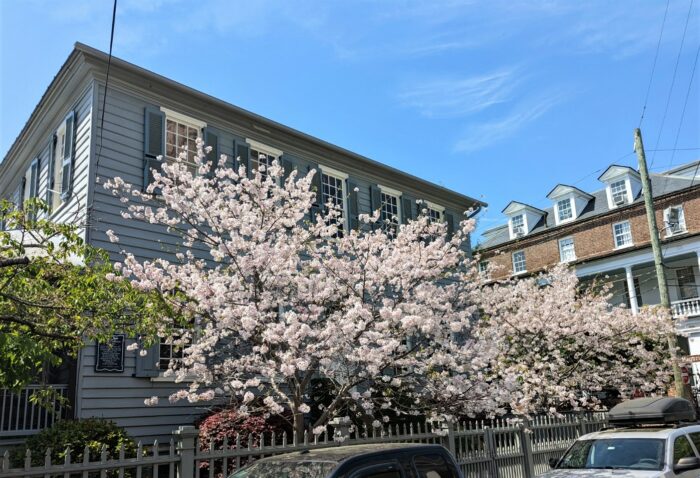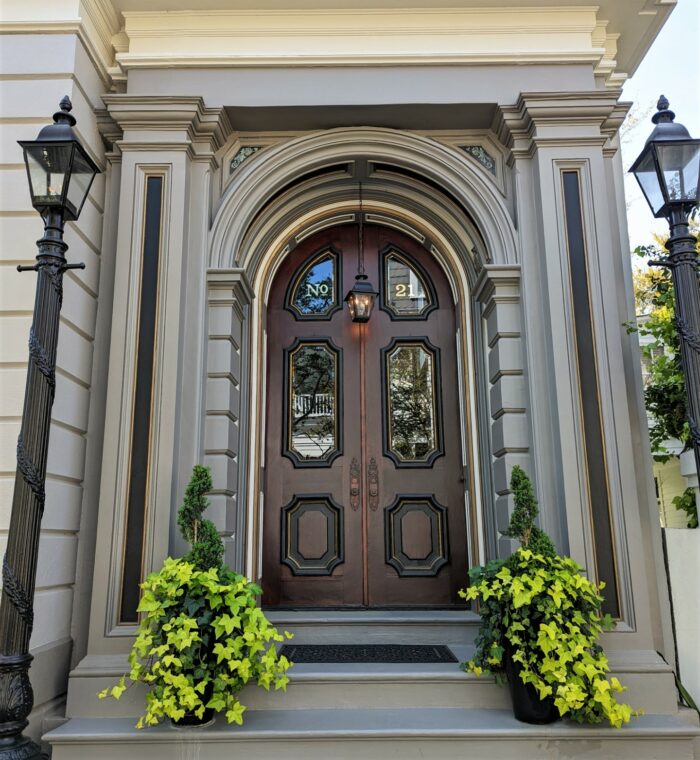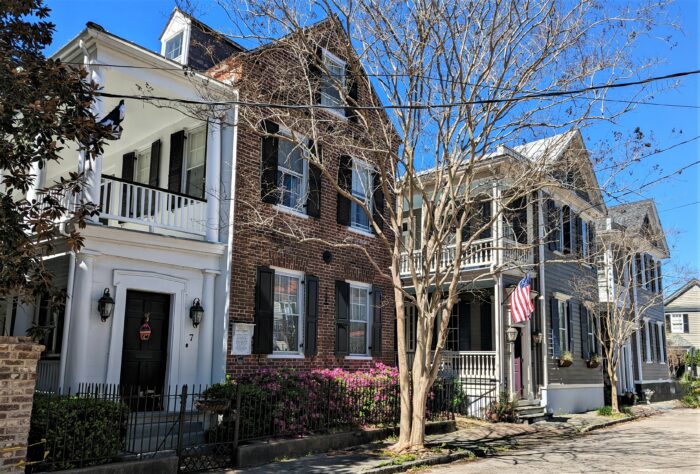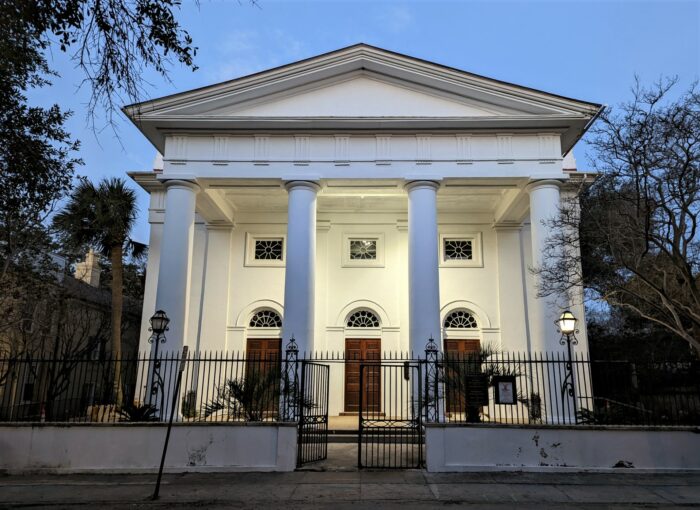This beautiful wisteria is on the wall of 2 Water Street — a house built before 1818 by Nathaniel Ingraham, who sailed during the Revolutionary War with John Paul Jones on the famous Bon Homme Richard. Interestingly, the ship is named in honor of Benjamin Franklin. Richard was a pseudonym used by Franklin (think Poor Richard’s Almanac).
Church Street Beauty
The garden behind this cool wall on Church Street was designed by the famed landscape architect, Loutrel Briggs.
Pineapple Gardens
You can find this beautiful garden at the Simmons-Edwards House on Legare Street, which is popularly known as the Pineapple Gates House.
The First
You can find this floral beauty at the C. Bissell Jenkins House on Murray Boulevard, which was built in 1913. Jenkins was the originator of the reclamation project that led to the completion of Murray Boulevard and the Low Battery. His house was the first built there.
Spring!
Hidden behind these beautiful blossoms is the Philip Porcher House on Archdale Street, built in 1773. It is on land that was originally a 34 acre plantation outside the walled city of Charlestowne.
Wisteria
This wisteria puts on a show every year. The house it adorns was built c. 1800-1806 on Meeting Street. In 1824, its owners hosted the Marquis de Lafayette (a hero of both the American and French Revolutions) on his visit to the United States.
Bells!
The bells of St. Michael’s are greatly traveled. They were imported from England in 1764 and were stolen by the British in 1782, but later returned. The bells have since returned to England twice more to be recast. They are one set of four that be heard pealing throughout downtown Charleston.
O’Donnell’s Folly
Built around 1865, 21 King Street, aka the Patrick O’Donnell House, is the largest Italianate style house in Charleston. There are differing stories behind its nickname, O’Donnell’s Folly, but none are too favorable.
Limehouse
The Limehouse family built the brick house in 1830 and owned the land the street is on — which is named after them. Today the Limehouse name is often associated with fruits and vegetables, as Limehouse Produce is a big supplier to the local restaurants.
First Baptist
The congregation of First Baptist Church, located on Church Street, was founded in Kittery, Maine (but at that time it was part of Massachusetts) in 1682. 26 of the congregants moved to Charleston in 1696. This church building was built in 1820.
- « Previous Page
- 1
- 2
- 3
- 4
- 5
- …
- 188
- Next Page »


